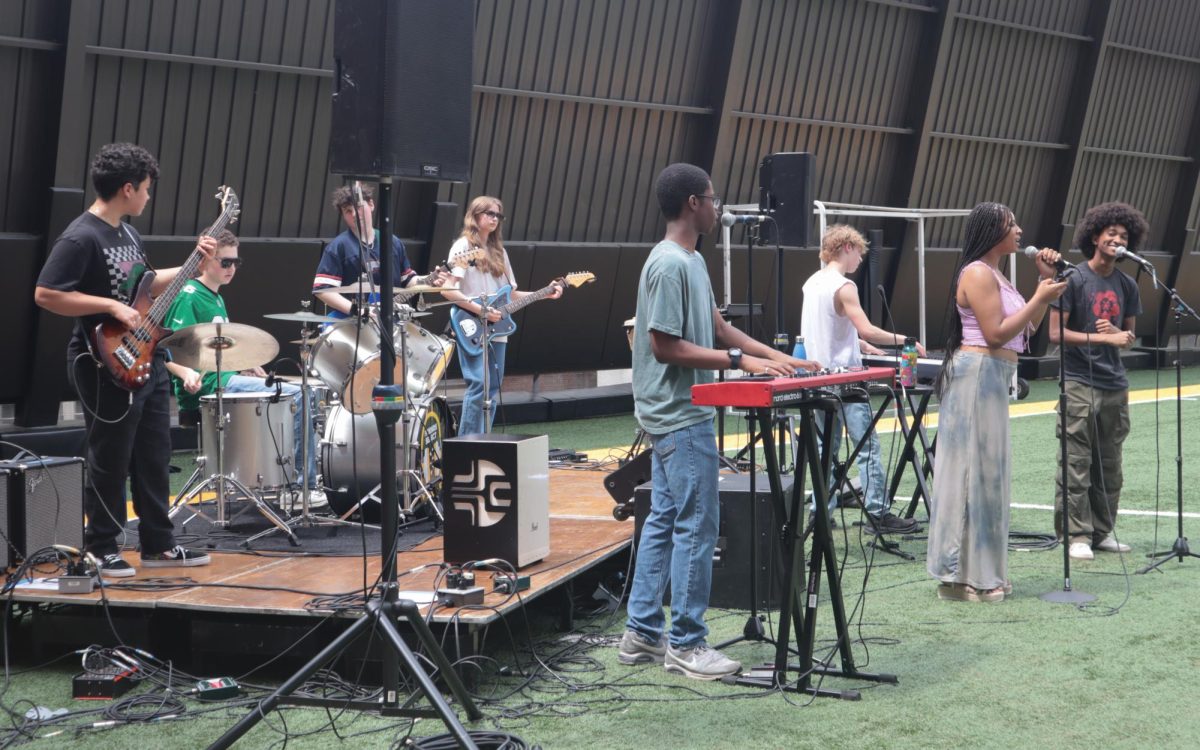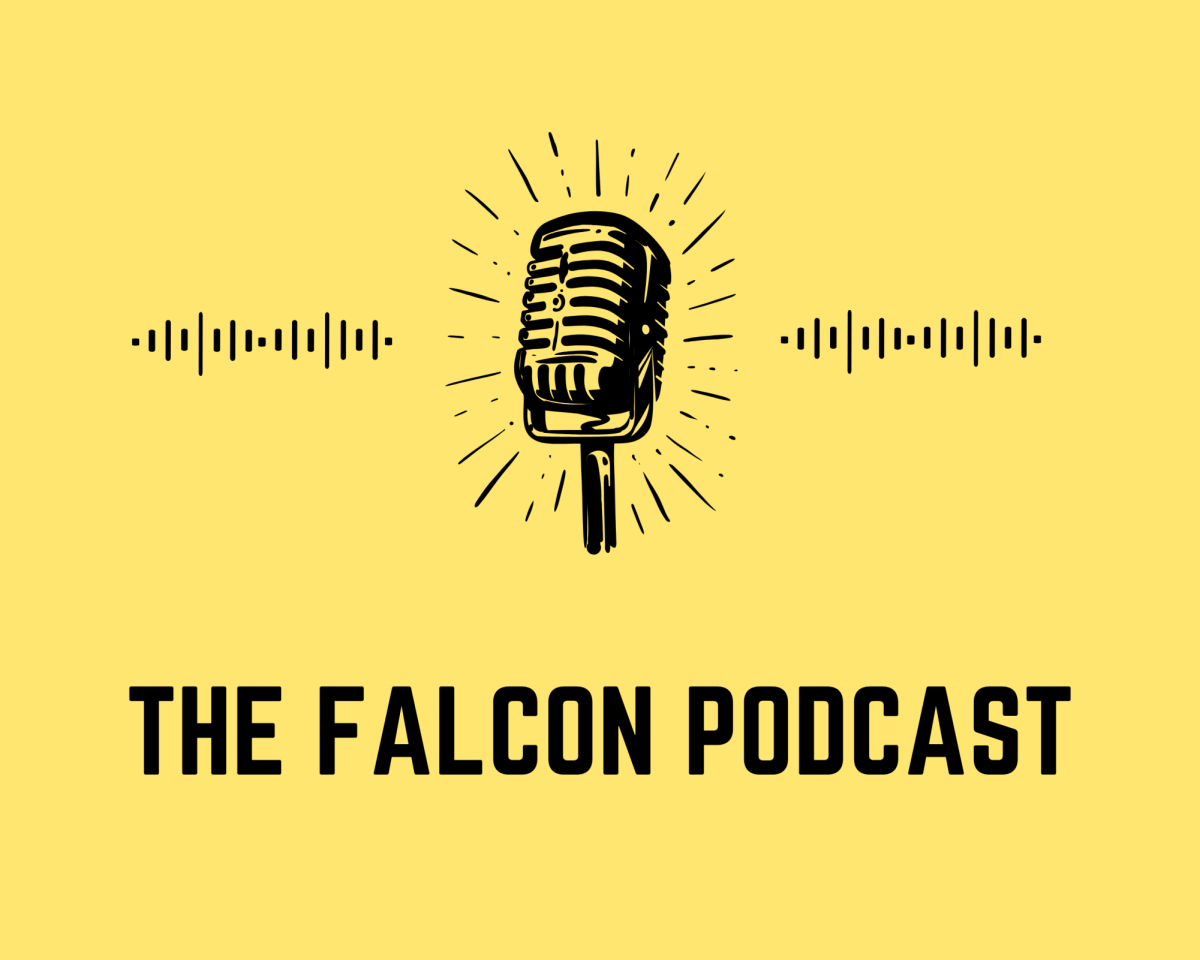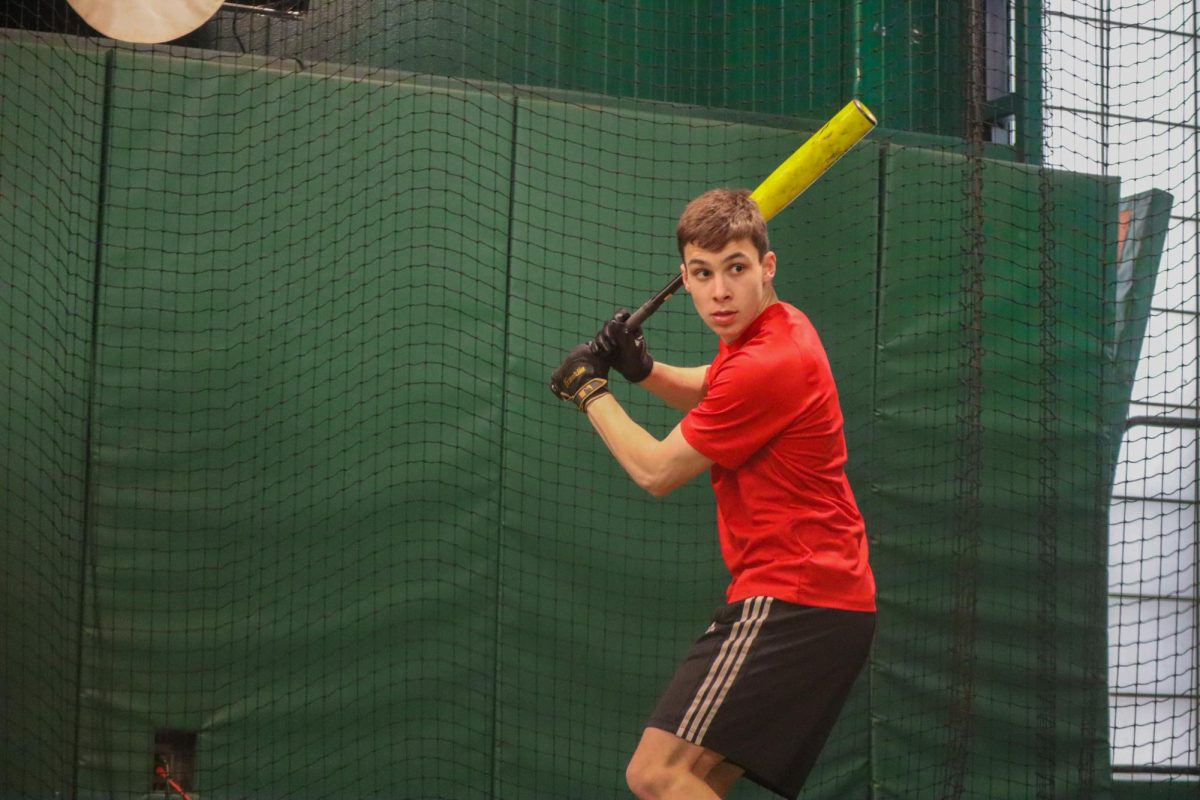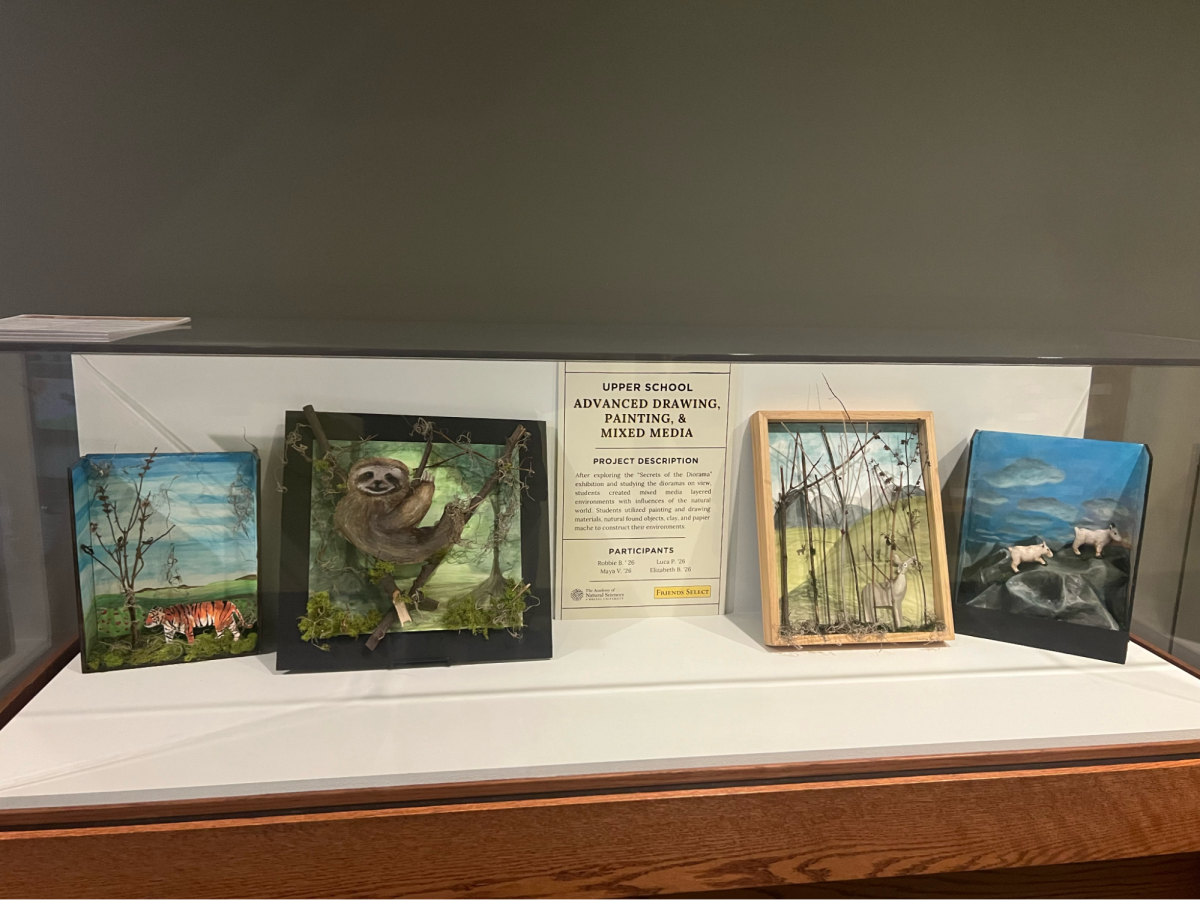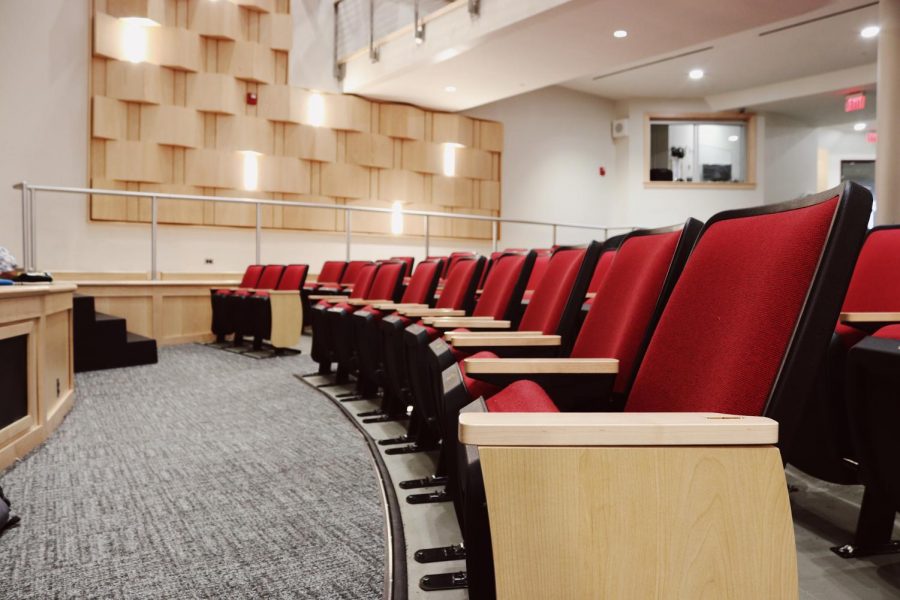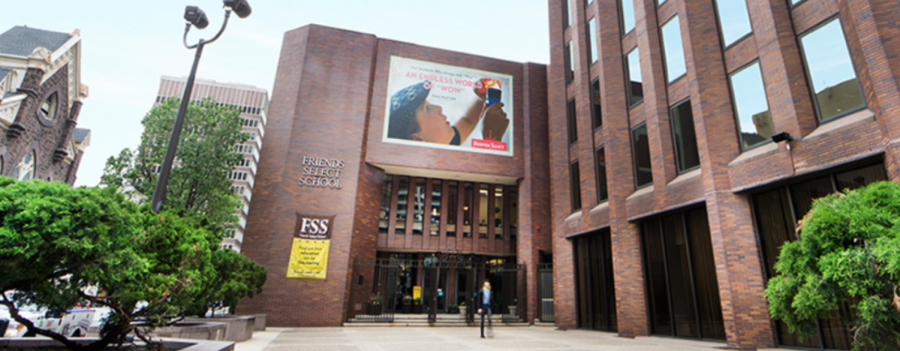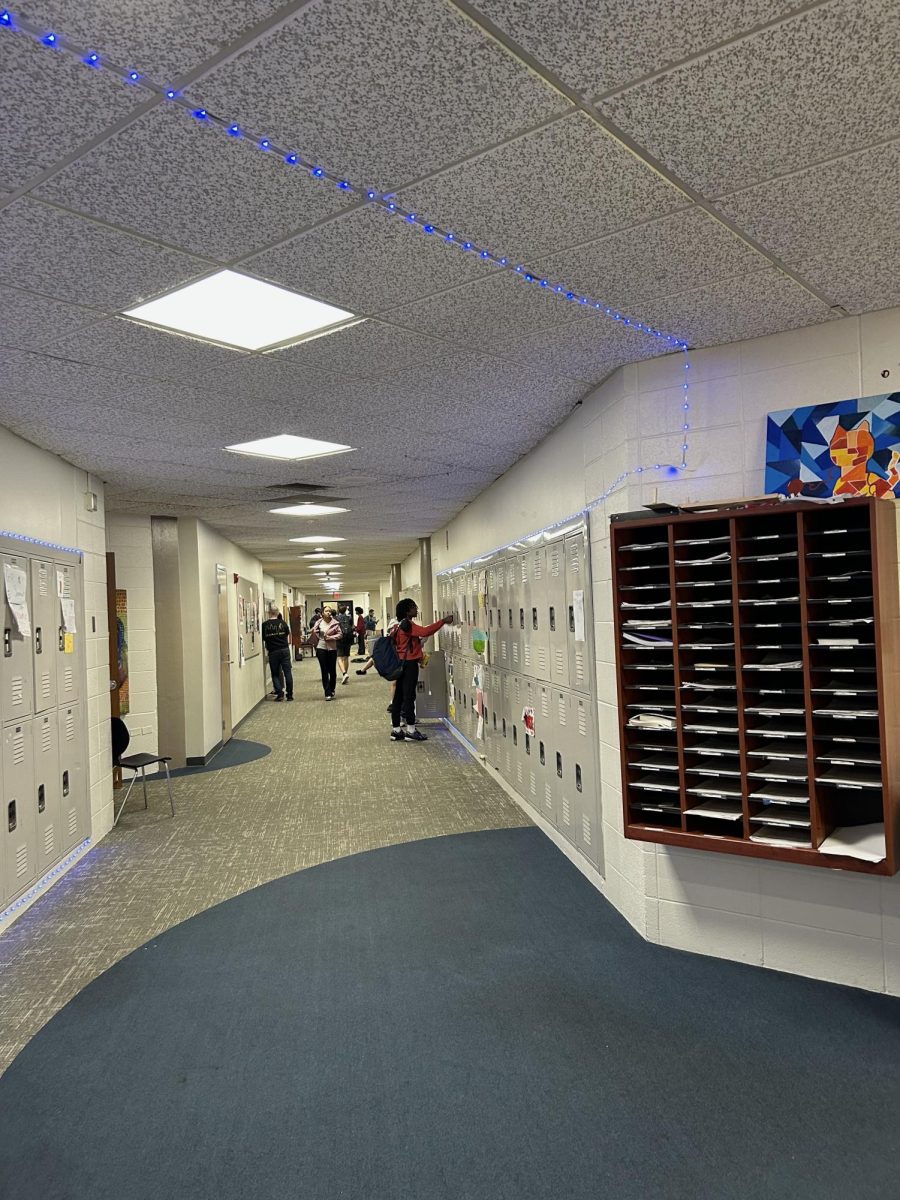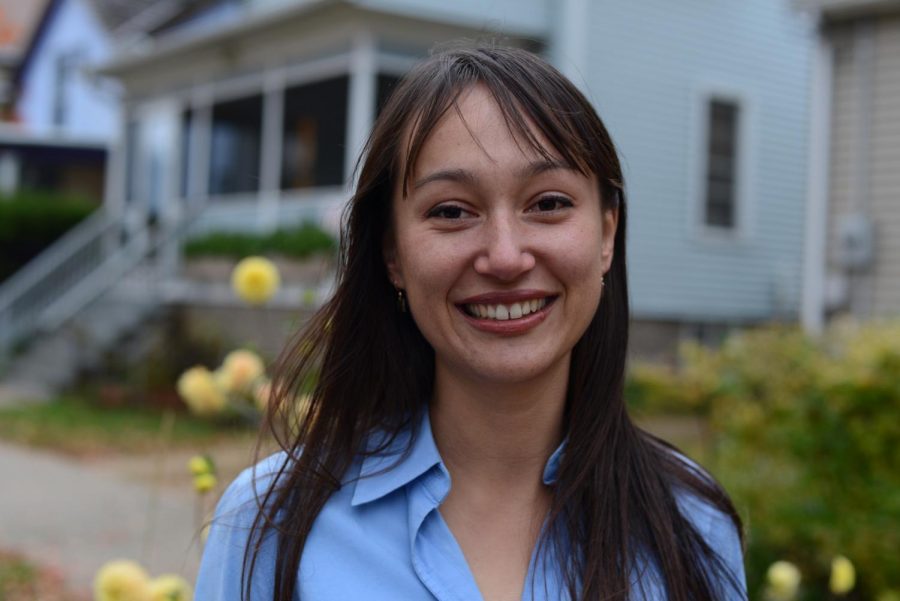Spring Greeney: A “Hands-On” Approach to Teaching
Spring Greeney, a self-proclaimed “curious, empathic introvert,” is Friends Select’s new 9th grade history teacher, the mastermind behind the Digital Archive project, and a huge fan of The Bachelorette.
Spring found Friends Select because of her desire to work “at a school, in the city, and with high school students.” After working at the University of Wisconsin in Madison on her graduate work in American history, she was interested in transitioning from teaching at a college level to working with younger students. She found herself teaching at Baldwin, but was fascinated by FSS’s promise of being “in the city and of the city.”
Spring originally found inspiration for teaching through her family– both of her parents are teachers, so she knew from a young age how fun and engaging teaching is. Her dad is a physics teacher, and her mom is a social worker, which she describes as a “special kind of non-classroom teaching.”
Spring was given the opportunity to essentially create and restructure the 9th grade history curriculum this year. After being given the skeletal structure of the year-long plan from the history department and former 9th grade teacher Martha Van Nuis, Spring was very intentional in making sure that her curriculum “fit into the longer arc of a high school student’s career.” She was given the time period and bones for the Philadelphia Museum of Art project, and had the freedom to choose “where in the world to study, the types of questions to ask, and the types of projects to do.”
In terms of asking broad historical questions, Spring “[loves] having students generate the question we are trying to answer and having them answer it themselves.” She loves giving students the agency to select topics that are relevant and important to them, and pushes them to find the answers themselves, rather than depending on the teacher to provide all the information. She also acknowledges that this may be frustrating for students who are used to being directly told what they are supposed to know, but she wants to help them grow in new ways.
Spring is utilizing the “historic times” through which the community is currently living, focusing her curriculum on the “economic inequality that exists in this country and globally.” Spring notes that “being able to think about this moment of inequality as not inevitable and not forever” is crucial, because “we know that it was constructed over the last 450 years. As people, as citizens, we can commit to deconstructing it.” She wants to focus her teaching on this story and to empower 9th graders to think in “hopeful and constructive ways” about what they want to do with their lives.
Teaching 9th grade is important to Spring — she loves involving and engaging younger high school students to think politically and socially, perhaps for the first time. “The number one way I do this is by modeling what it means to ask questions about history that relate to the present.” In future years, Spring hopes to help students experience “going to protests, meeting with activists, and writing to their legislators.”
Spring is the creator of the 9th grade history project: the Digital Archive. This project involved exploring old newspapers and yearbooks, interviewing alums, keeping journals, and much more. Spring finds the journals particularly interesting because “future students and researchers might be interested to know how current students navigated this moment.”
Spring drew her inspiration for this project from being a new and very curious community member. “I am new to Friends Select and I don’t know anything about the history of the school. I also realized many 9th graders would be in the same position because they were not coming from the lower and middle school,” says Spring. She aimed to do something “hands-on, project-based, and [welcoming] to high school.”
The hands-on aspect of the Build a Digital Archive project was particularly important to Spring because students often tire quickly of constant Zoom meetings, and the transition from hybrid back to completely virtual learning was difficult for those who were working with physical materials rather than online resources. Spring describes working with Rafi Foster ‘24 and Rhys Joseph ‘24, sharing that they were great about coming to office hours to collaborate and arrange plans for their project: building a scale replica of the school building as it looked in the 1920s. “They sounded like a dual-parent household talking about their child who they were trying to co-parent as people living in different places.” Rafi notes that Spring “helped us contemplate how we would execute the project, went over the pros and cons, and really listened to us.” She loved their creativity and flexibility and was overall pleased with the imagination and resourcefulness that her students exhibited throughout the course of the project.
Spring is also a 9th grade advisor this year. She laments that establishing teacher-student connections through iSelectLearning has been slow, but she has gotten to know so much more about her advisees outside of the classroom. “My nine advisees are my favorite people that I know this year,” she says. She feels that she has learned what it means to “be a whole human being from the eyes of Friends Select” through her role as an advisor, and has planned many social activities with her group such as walks, online games, and playlist making.
Spring names city council member Helen Gym as her current role model. “We share an ethnic identity, [and] she bucks all the stereotypes of a subservient, quiet, polite Asian woman.” Spring is particularly impressed by her outspokenness on her progressive beliefs, and notes that she is a “force for good in our city.”
Lastly, Spring wants the FSS student body to know that she is looking for a middle name and is completely open to student suggestions. The current leaders are Spring Roll Greeney and Spring Gang Greeney. Students — time to pitch some ideas!

